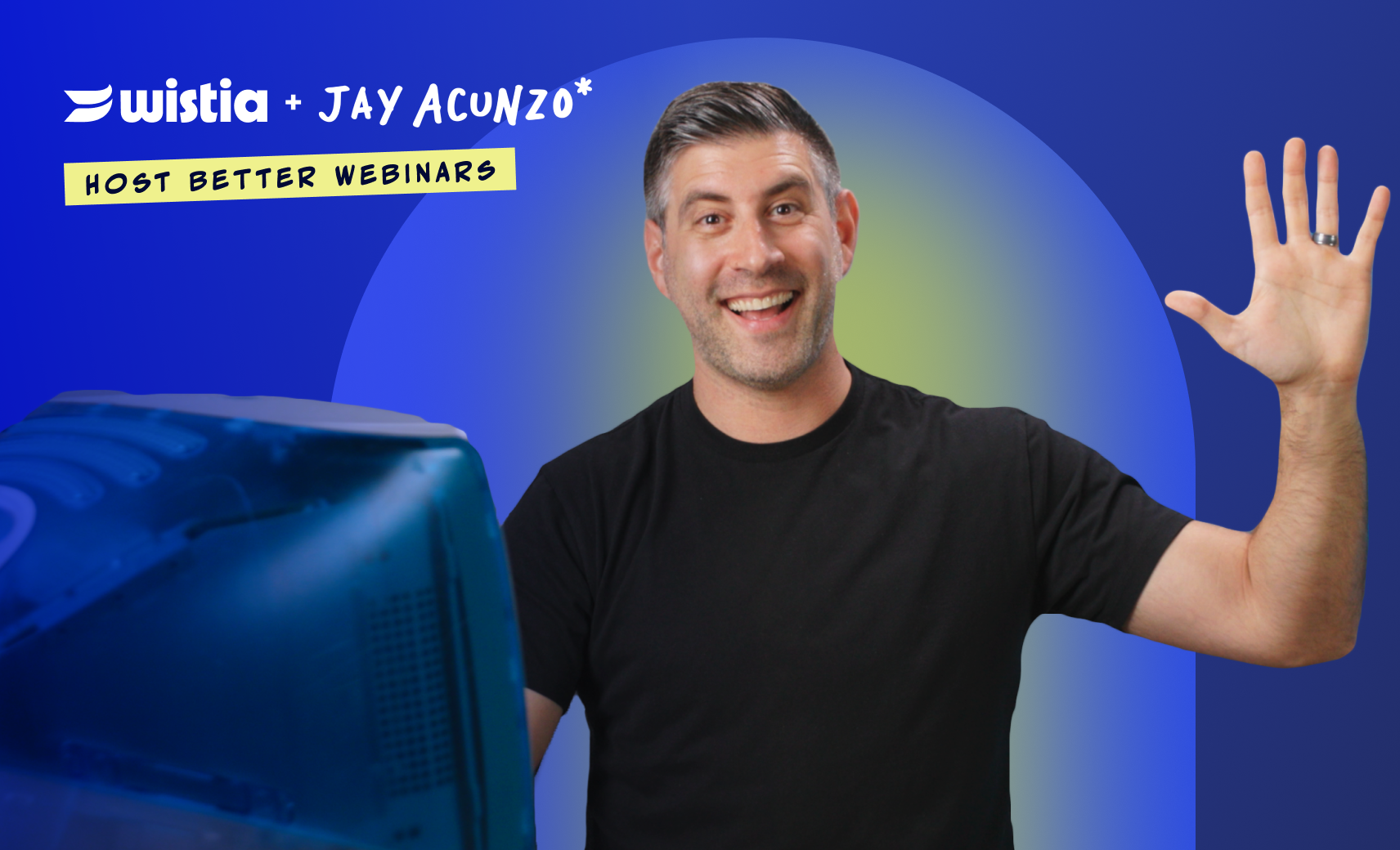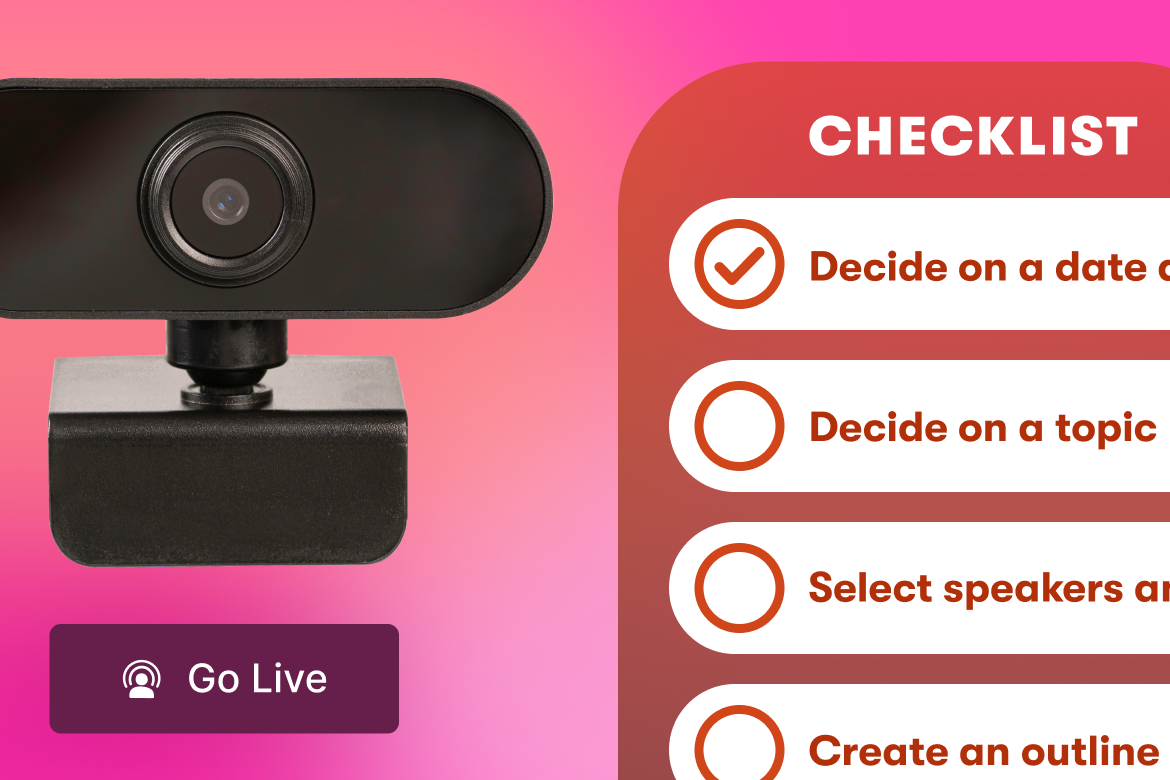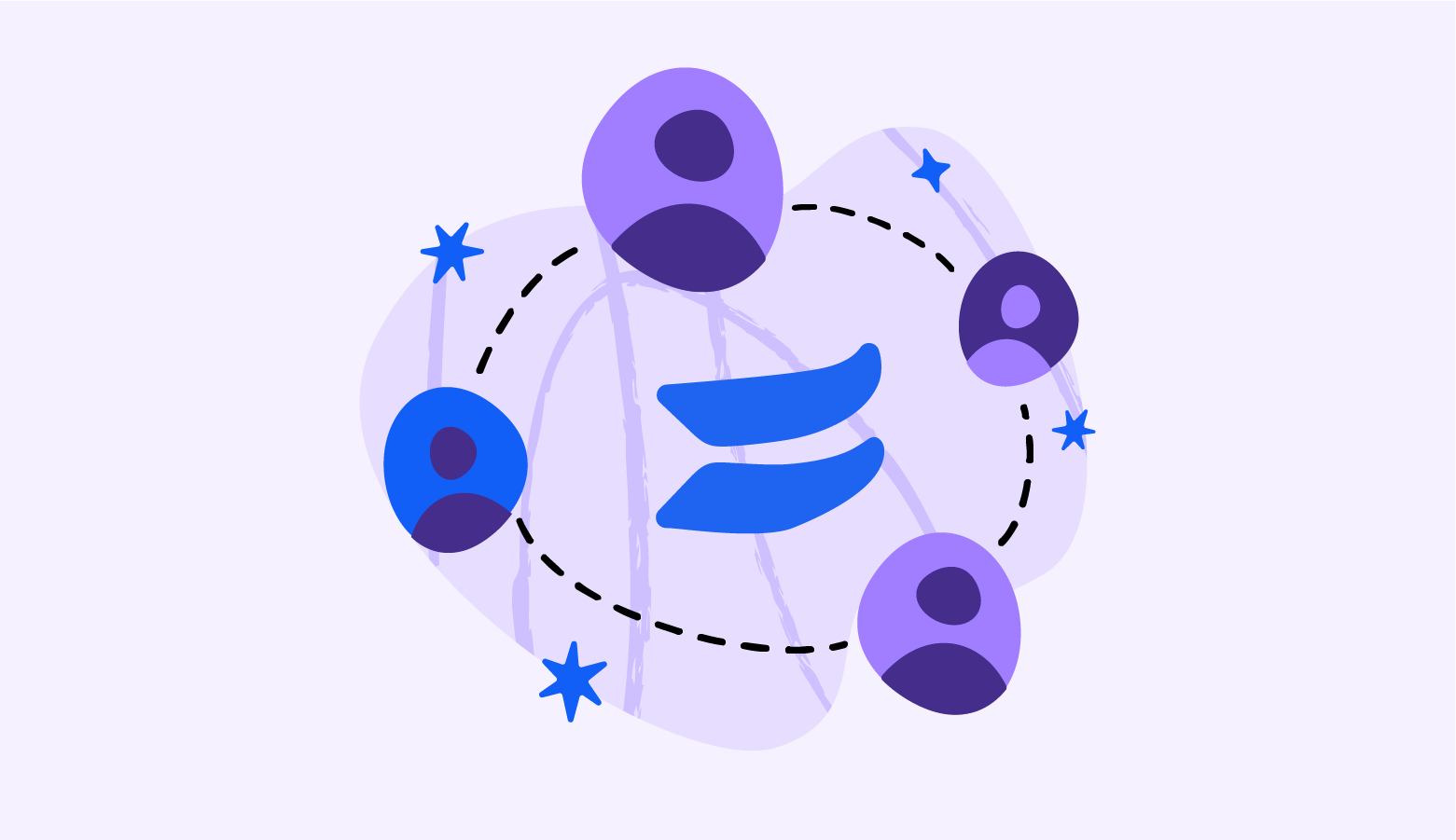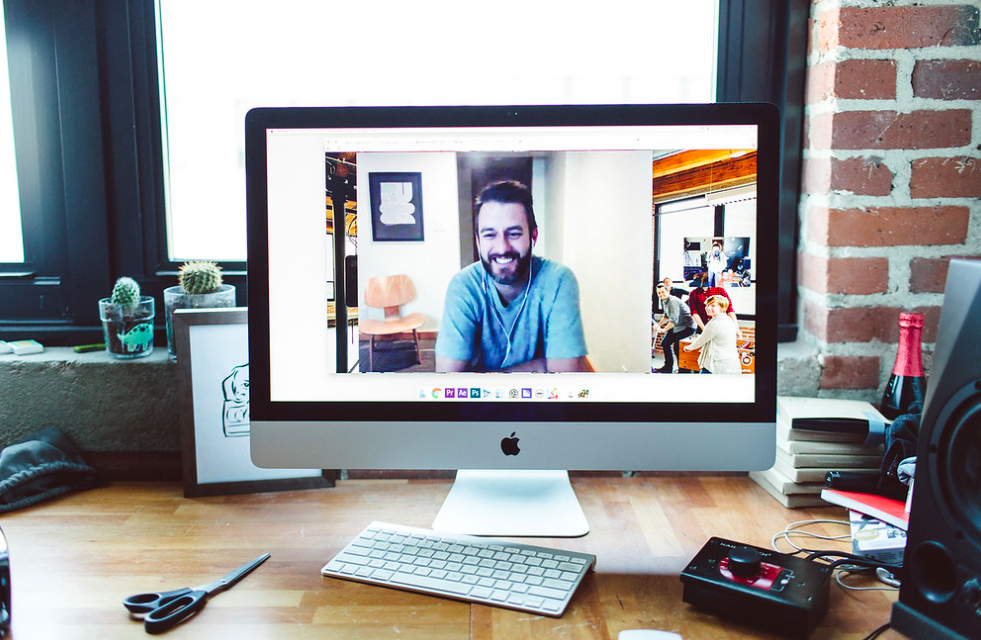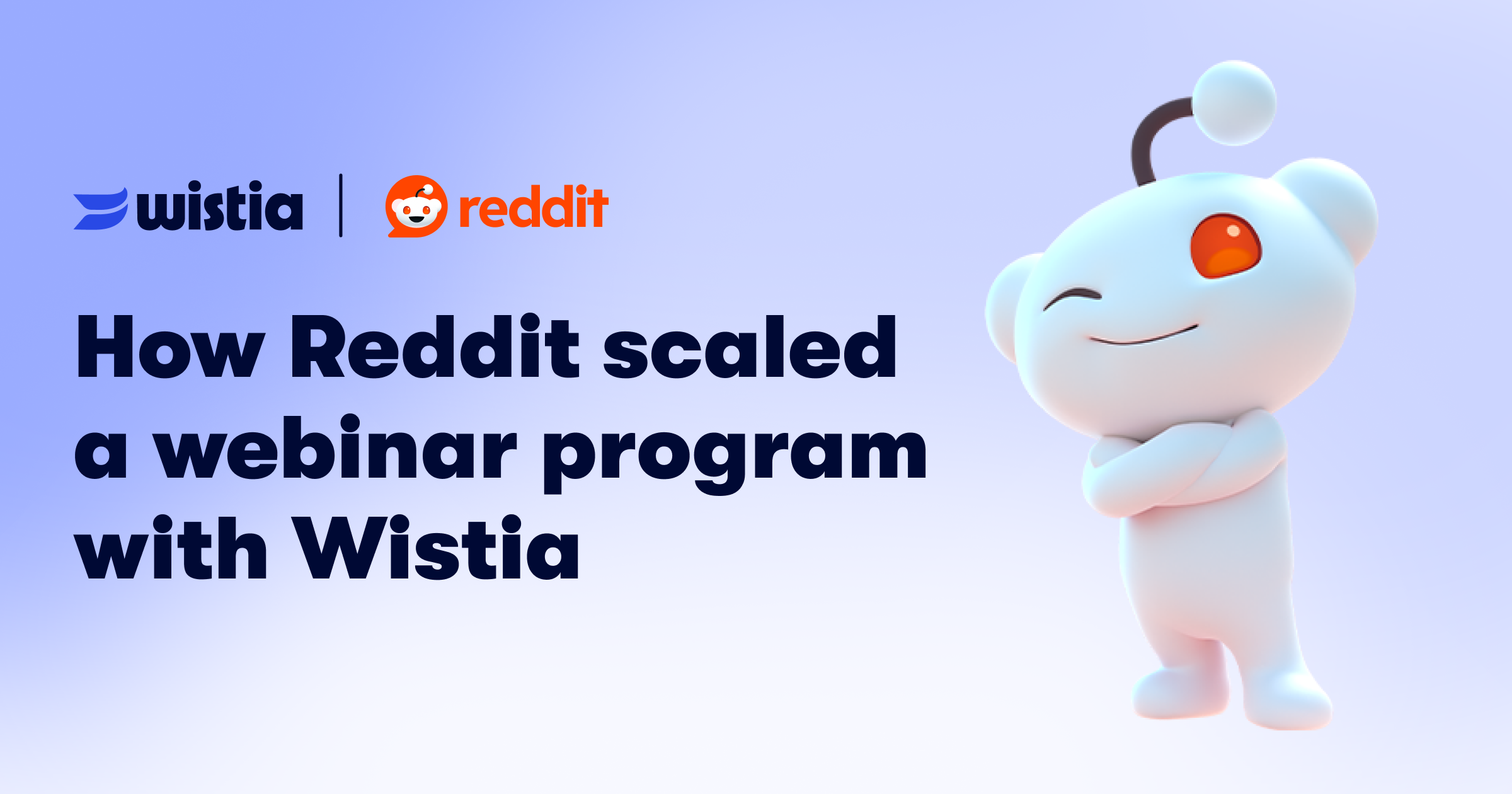Our First AI Video Ad: How We Made It and What We Learned
See how Wistia built a complete video ad with AI for under $10K — process, tools, and lessons inside.
April 15, 2025
Topic tags
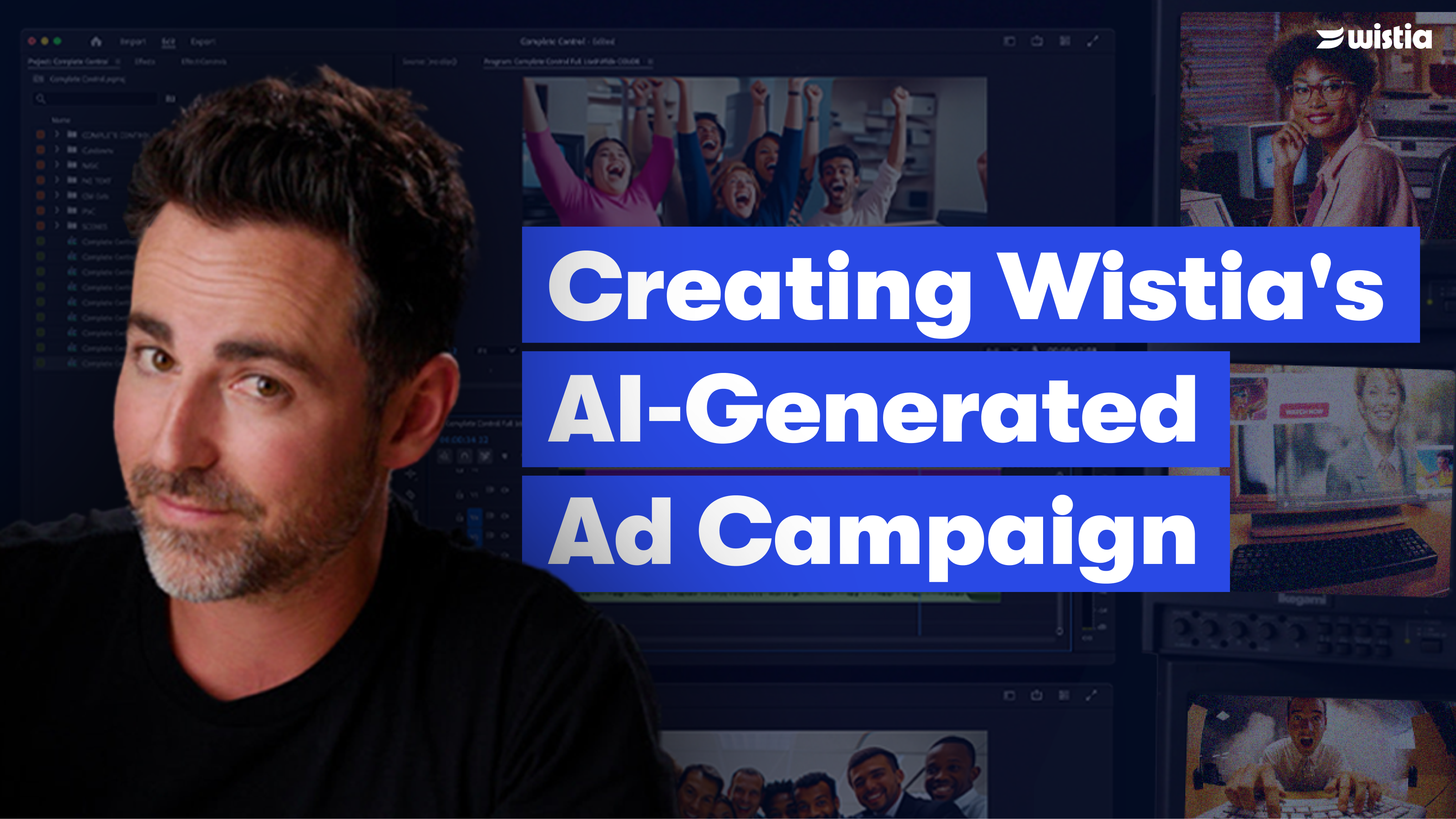
AI is changing how we create videos, and it’s catching on fast. Our 2025 State of Video Report revealed that 41% of professionals now use AI tools to make videos — up from just 18% in 2023.
Like many marketers, we’re still figuring out the best ways to use AI in our video workflows. Recently, our creative team pushed the boundaries and produced an ad almost entirely with AI.
Called Complete Control, the project was led by Chris Lavigne (Head of Video Production), Billy Woodward (freelance animator and AI architect), and Dan Mills (VP of Marketing and singer-songwriter).
Here’s how it turned out:
Let’s talk about how our creative team pulled it off, what they learned, and what they would (and would not) do again.
A little bit about our brand campaign
Complete Control was the last of three video ads we made to spread the word about Wistia. It was also the first and only one we’ve created with AI — so far. All three ads in this campaign varied in budget, production style, agency support, and AI involvement.
1. Do It Right Here: $25k, in-house
We kicked off the campaign with this ad:
We produced it in-house for around $25,000 — and we didn’t use any AI. Instead, we created an indie rock song and leaned into animation and existing footage to bring the message to life. Animation was a good way to showcase the whole platform, and it helped us move fast to get the ad out in the market.
2. Webinar Wizard: $100k+, in-house & agency
For the second ad, we took a different aesthetic approach to call attention to our webinar offering. Instead of only using animation, we incorporated live action with actors — and a wizard! Check it out:
This one cost over $100,000, and we produced it in-house with lots of external help.
We shot it in Toronto with an external production crew, a casting agency, and a post-production house. It was a multi-camera shoot with a huge set and all the headaches that come with it. But there was beauty in having tons of collaborators bring a human touch to the project.
AI did play a part, though — a small part. Chris only brought it in to help with storyboarding.
3. Complete Control: $10k, in-house & AI
For the last ad in the campaign, AI became the team’s main tool for bringing their concept to life. This ad featured more “actors” than Webinar Wizard, except this time, they were AI-generated. And the best part? The entire production cost less than $10,000.
Recently, Chris, Billy, and Dan sat down for an “Ask Me Anything” session, where they dove into the process behind this ad and why they decided to have AI do the heavy lifting.
A look behind the scenes
The idea for Complete Control started with a catchy demo song Dan recorded, but the ad’s look and feel kicked off with a creative workaround.
Brainstorming concepts
While experimenting with AI tools during Webinar Wizard, Chris discovered how quickly AI-generated storyboards could bring a concept to life. That same approach became the launchpad for this ad.
“We’ve decided to start almost every larger-scale video with an AI-generated storyboard. No more hand-drawn sketches or lengthy script treatments. AI is the fastest way to visualize if an idea works.”Chris Lavigne
There was just one issue, though. Chris didn’t have the demo song file on his computer. It was on Dan’s laptop, and he wasn’t available to share it.
To keep things moving, Chris opened up an app called Suno, sang the melody from memory, and used that track to generate the first animatic. Those early AI-generated frames were so good that they not only convinced the team to take the plunge with AI but some even made it all the way into the final ad.
“You always want to stay within time and budget — but still do the most fun, creative thing possible. AI wasn’t the right tool for our other ads, but when we saw that retro, glossy look coming together, we realized that this concept works. We could make a whole ad with AI and let the song carry it.”Dan Mills
How AI drove the process — start to finish
The first thing the team did was put together a tight, efficient creative stack:
- Suno to create placeholder tracks during concepting
- Midjourney to generate high-quality, commercial-friendly images
- Runway to animate those images
- Adobe Photoshop and After Effects to refine AI-generated visuals
Next, they took these steps:
Step 1: Generate images with Midjourney
Chris and Billy fired up Midjourney, gave it simple text prompts, and generated over 2,500 images. They figured out a few helpful prompt tricks along the way:
- Specify eras (e.g., “1989 stock photography”)
- Add negative prompts using “- -no” to eliminate unwanted elements
“The process is like playing in a sandbox. You’re following intuition, and it’s a numbers game. You have to iterate and iterate and iterate. It’s almost like digital sculpting. When you’re playing around with text prompts, word placement, the words you use, and different decades, it can wildly affect your output. You can also feed it some style references in terms of images or even Pinterest mood boards.”Billy Woodward
Next, they spent a lot of time sifting through the images to find the best ones. Of course, not all of them were winners because, well, it’s AI. To see what we mean, check out these gems:
Step 2: Animate images with Runway
Once Chris and Billy had a collection of standout stills, the next challenge was bringing those images to life. That’s where Runway came in. It turned static frames into dynamic, moving scenes that gave the ad its signature retro charm.
They imported their favorite Midjourney images into Runway, and it generated over 600 video iterations. The software’s “expand video” feature made it super easy to create multiple formats (square, vertical, and horizontal).
Step 3: Refine clips with Photoshop & After Effects
If the footage from Runway needed any more tweaking for visual effects or different layering, Chris and Billy would bring it into Photoshop or After Effects.
- Photoshop’s Generative Fill handled quick fixes by removing odd details or extending visuals.
- Billy used After Effects to apply motion tracking and blend AI footage with custom graphics.
For clips that didn’t need extra polish, they skipped After Effects and brought them straight from Runway into Premiere Pro to speed up the editing process.
How AI enhanced creativity and saved time and money
Using AI gave our team a huge creative advantage without blowing the budget. Here’s how:
- Rapid visualization: AI made it easy to test ideas and get instant visual feedback — no need for expensive shoots or waiting on production timelines.
- Budget-friendly production: Despite its scope, the entire project came in under $10,000, thanks to AI-generated assets.
- Limitless creativity: With AI, the team explored a wide range of scenarios — different locations, characters, and styles — that would’ve been impossible within a traditional budget.
- Faster turnaround: The entire production process, including multiple versions and formats, was completed in just two weeks — an incredibly fast pace for this kind of creative work.
“At the end of each day, we were genuinely amazed at how much we accomplished. AI allowed us to achieve things that would’ve been logistically impossible or prohibitively expensive otherwise.”Chris Lavigne
What our team learned
AI is most powerful when paired with human creativity
Our team got the best results when they used AI for ideation and generation and human touch for direction, pacing, and polish.
Constraints are your creative superpower
AI tools are limitless, which can be overwhelming. Setting clear visual and narrative constraints helped our team get to the good stuff faster.
Iteration is everything
Creating something good often meant generating hundreds (or thousands!) of variations. AI workflows thrive on exploration. Our team picked up a few quick tips:
- Experiment with phrase placement.
- Set intentional boundaries (eras, negative prompts).
- Use Midjourney’s inpainting to fine-tune your visuals.
AI fatigue is real
Working extensively with AI can sometimes lead to creative frustration (a.k.a. AI fatigue). Chris found that setting intentional constraints in prompts helps manage this fatigue and achieve better outcomes.
Take plenty of breaks, and don’t expect perfection on the first try.
Organizing your workflow takes intention
With so many assets and versions, traditional file structures didn’t always cut it. Our team had to develop new systems as they went.
Ethical concerns deserve space
Not everyone’s on board with AI, and the concerns some people have about it are valid. Our team approached those conversations with curiosity (not pressure) and acknowledged AI as a tool, not a replacement.
It’s important to:
- Treat AI as a complementary creative tool, not a replacement.
- Transparently discuss ethical and copyright considerations internally.
- Approach AI usage intentionally and respectfully.
“Generative AI doesn’t diminish human creativity. It amplifies it. Those who embrace AI as a creative tool will lead their fields.”Billy Woodward
AI in video is here to stay
This project was a turning point for our creative team. AI helped them move faster, cut costs, and try new creative ideas they wouldn’t have explored otherwise.
At Wistia, we’re all about testing new tools, and AI is one we’re especially excited about. It’s opening up all kinds of new possibilities, and we think it’s the start of something big for creative teams like ours.
